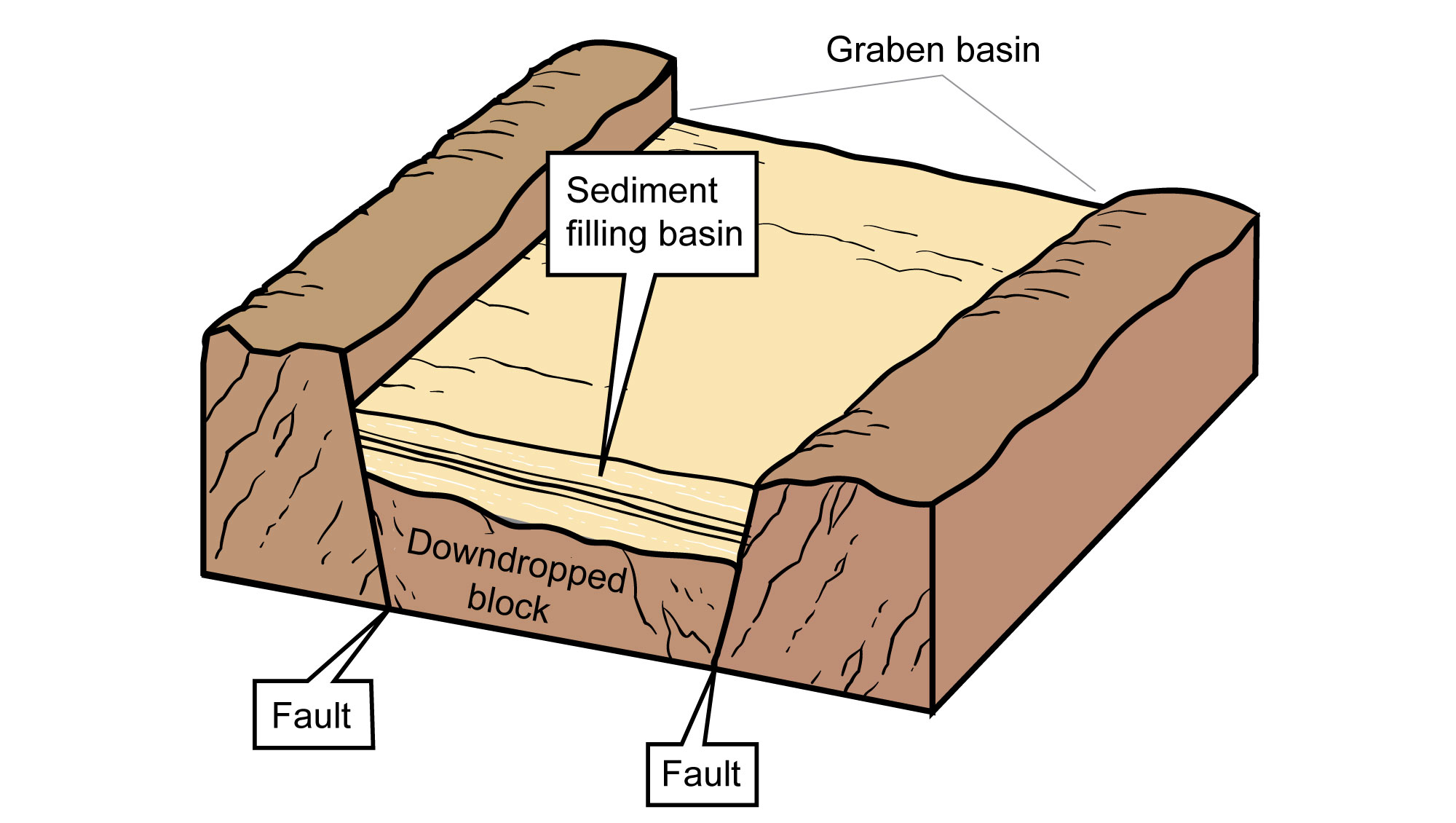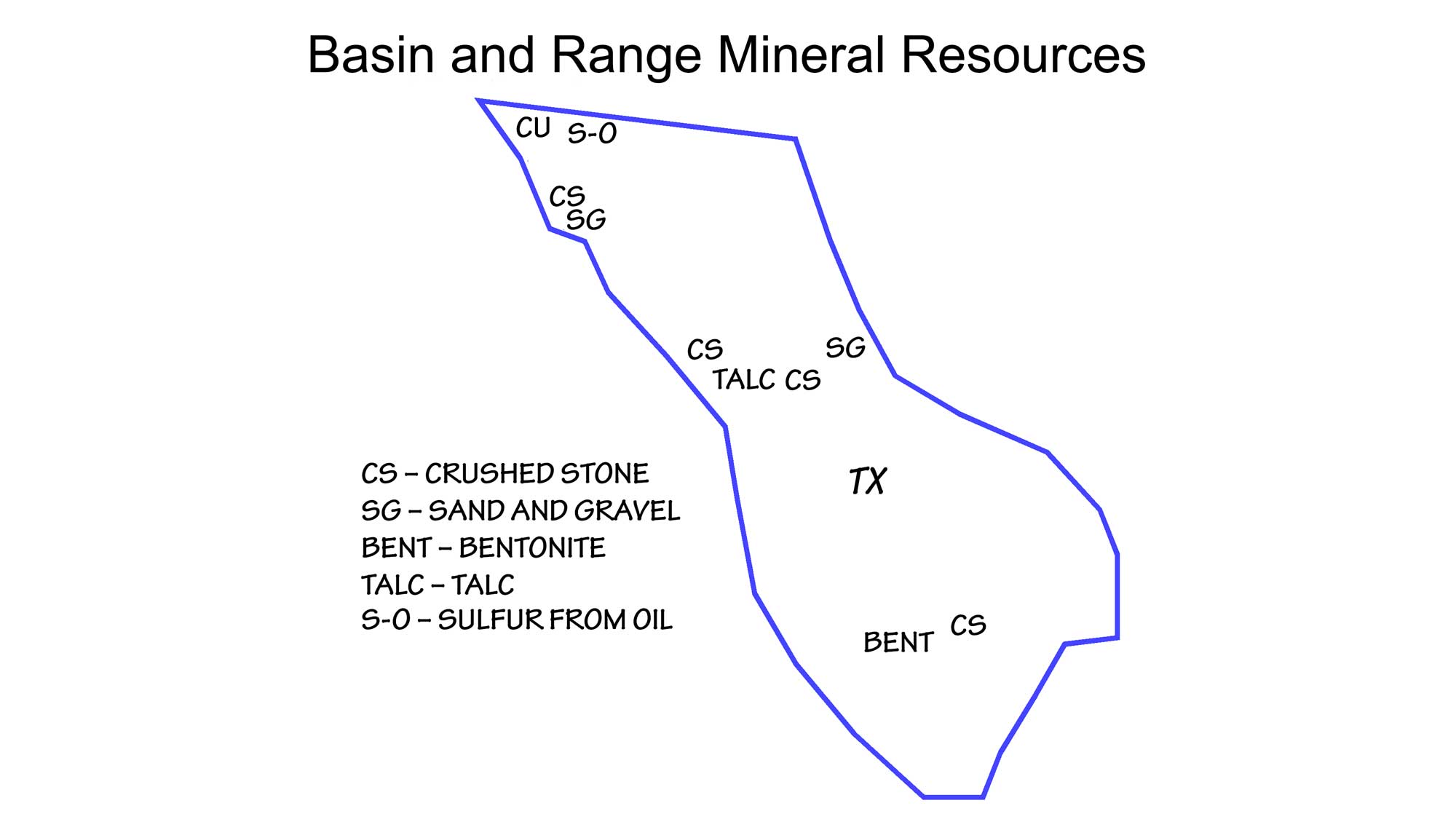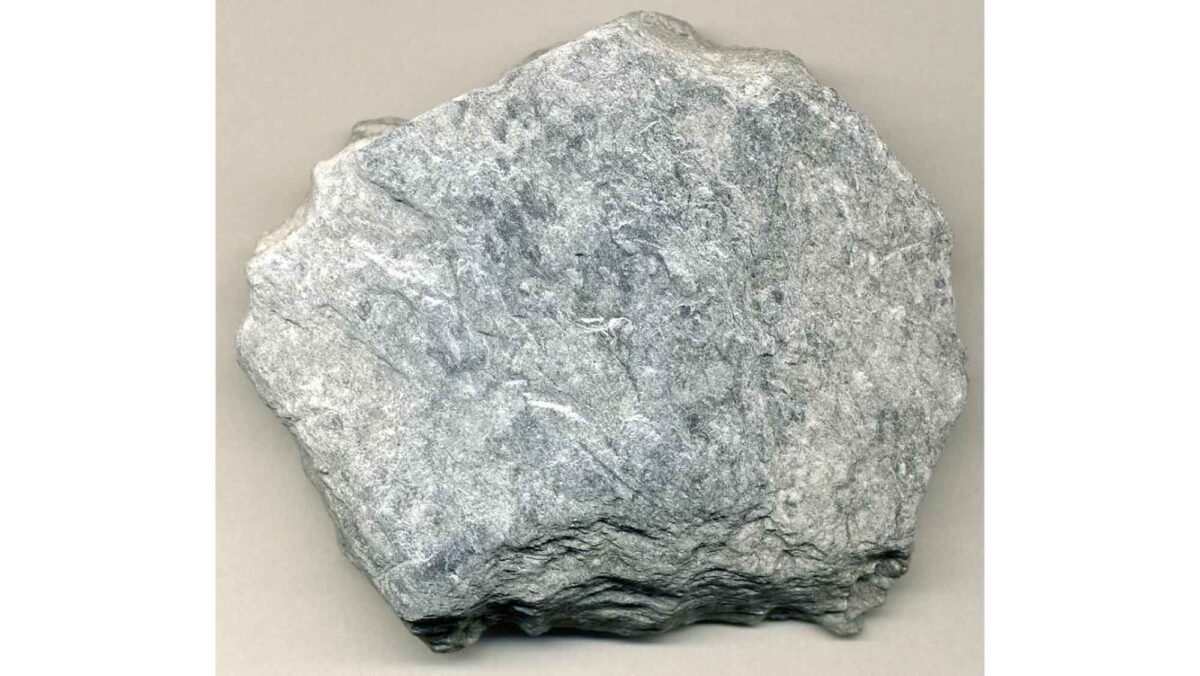Snapshot: Overview of the mineral resources of the Basin and Range region of the South-Central United States in western Texas.
Topics covered on this page: Overview; Resources (references and further reading about minerals).
Credits: Most of the text of this page is derived from "Mineral resources of the South Central US" by Allen Macfarlane, chapter 5 in The Teacher-Friendly Guide to the Earth Science of the South-Central U.S., edited by Mark D. Lucas, Robert M. Ross, and Andrielle N. Swaby (published in 2015 by the Paleontological Research Institution). The book was adapted for the web by Elizabeth J. Hermsen and Jonathan R. Hendricks in 2021–2022. Changes include formatting and revisions to the text and images. Credits for individual images are given in figure captions.
Updates: Page last updated February 13, 2022.
Image above: A sample of talcite (talc-rich rock) from near Allamoore, Texas. Photograph by James St. John (Flickr; Creative Commons Attribution 2.0 Generic license).

Overview
The Basin and Range province of west Texas is underlain by sedimentary, igneous, and metamorphic rocks ranging in age from Precambrian to Neogene. These are exposed in north-south oriented, fault-bounded mountain ranges, with considerable amounts of eroded sediment filling the valleys in between ranges.

Basin fill in the Basin and Range. Image modified from original by Jim Houghton.
Taken together, these peaks and valleys (also called horst and graben landscapes) produce basin and range topography, formed as a result of stretching and thinning of the lithosphere during the Paleogene, when crustal extension and faulting led to the formation of almost 400 separate mountain blocks.
The mineral resources that are mined commercially in the Basin and Range are limited to talc (see image at top of page) and bentonite, industrial minerals used in manufacturing.

Principal mineral resources of the Basin and Range. Image adapted from the USGS 2009 State Minerals Yearbook.
Crushed stone, sand, and gravel are quarried as construction materials, and sulfur is extracted from oil at a plant in El Paso County.
Deposits of barite and fluorite have been found in this region, but they are of no commercial value and are not currently mined. Sources of metals (including uranium, tungsten, zinc, tin, iron, manganese, lead, silver, molybdenum, and mercury) have also been discovered in El Paso County, but these are typically too small to be of commercial value.
Resources
Resources from the Paleontological Research Institution
Digital Atlas of Ancient Life: Minerals (collection of 3D models on Sketchfab): https://skfb.ly/6WxTo
Digital Encyclopedia of Earth Science: Minerals: https://earthathome.org/de/minerals/



